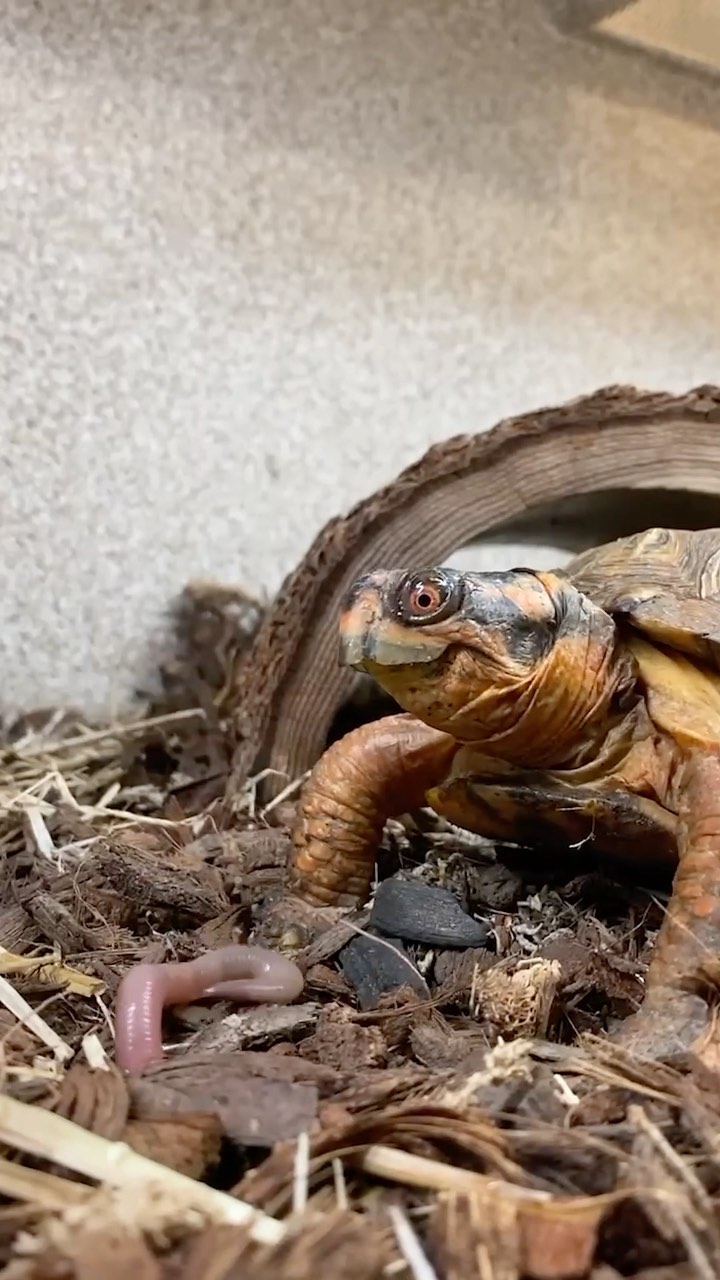– Eastern box turtles exhibit distinct dietary preferences at different life stages.
– The role of nutrition in the health and longevity of Eastern box turtles.
– Conservation efforts to protect the Eastern box turtles and their natural habitats.
– Educator Katra at Stone Zoo collaborates with Donatella to explain the nuances of their diet.
Eastern box turtles, known for their long lifespan and vibrant shell patterns, navigate a complex dietary journey from when they hatch. This dynamic shift in dietary needs is crucial for their development, health, and survival. Educator Katra at Stone Zoo, with assistance from Donatella, sheds light on the fascinating dietary evolution of these creatures, revealing how their food preferences change as they grow.
In infancy, Eastern box turtles exhibit a marked preference for protein-rich food. This protein-centric diet is essential for their rapid growth and development. Hatchlings and juveniles consume more worms, snails, insects, and even small amphibians to fulfill their nutritional needs. These protein sources provide the necessary energy and building blocks for muscle and shell development, which are crucial for their survival and protection.
As they transition into adulthood, their dietary preferences become more omnivorous. Adults integrate more plant-based food into their diet, including fruits, berries, fungi, and leafy vegetation. This shift reflects their changing nutritional requirements and their adaptation to available food sources within their environment. Including plants in their diet is vital for proper digestion and providing essential vitamins and minerals.
Educator Katra emphasizes the importance of understanding these dietary needs for conservation efforts and responsible zoo management. Proper nutrition is vital for Eastern box turtles’ health, longevity, and reproductive success. In captivity, ensuring a diet that mimics their natural food intake is crucial for their well-being. It involves offering a varied diet that caters to their nutritional needs at different life stages, fostering an environment where they can thrive.
Conservation efforts are paramount for protecting Eastern box turtles and their natural habitats. Habitat destruction and fragmentation pose significant threats to their population. Protecting their natural environments ensures they can access their diverse diet and perform their ecological roles. Conservation initiatives also involve educating the public about the species and promoting responsible interaction with their natural habitats.
Collaboration between educators like Katra, wildlife enthusiasts, and conservationists plays a vital role in protecting and studying Eastern box turtles. By understanding their unique dietary requirements and challenges, efforts can be directed toward safeguarding their population. Donatella’s contribution to this educational endeavor highlights the importance of engaging diverse expertise in conservation education.
Exploring Eastern box turtles’ dietary preferences offers a microscopic view of the broader challenges in wildlife conservation and zoo management. Addressing the nutritional needs of such species in captivity necessitates a detailed understanding of their natural behaviors and preferences. It also underscores the importance of habitat conservation in the wild, enabling these creatures to access their diverse food sources for survival.
The collective efforts of educators, zoo professionals, and conservationists are crucial in ensuring the survival of Eastern box turtles. By shedding light on the specifics of their diet at different life stages, these professionals contribute to a broader understanding and appreciation of the species. Such insights enhance conservation strategies and encourage public engagement and support for these endeavors.
Eastern box turtles serve as a reminder of nature’s complexity and the importance of each species in the ecosystem. Their dietary journey from hatchling to adulthood reflects ecological balance’s intricacies and the need for comprehensive conservation strategies. Through dedicated research, education, and conservation efforts, there is hope for the continued survival and flourishing of Eastern box turtles in their natural habitats and under the careful management of zoos and conservation centers.
*****
Source Description
DYK: Eastern box turtles eat different foods at different stages of life. Educator Katra at Stone Zoo explains the squirmy details with an assist from Donatella.

